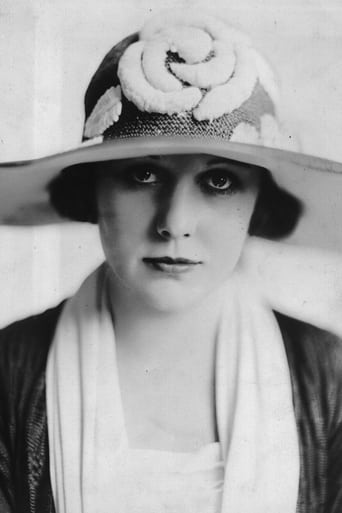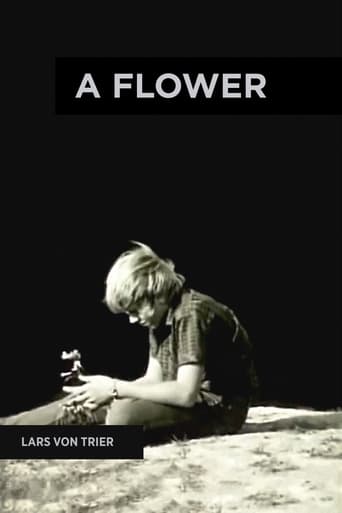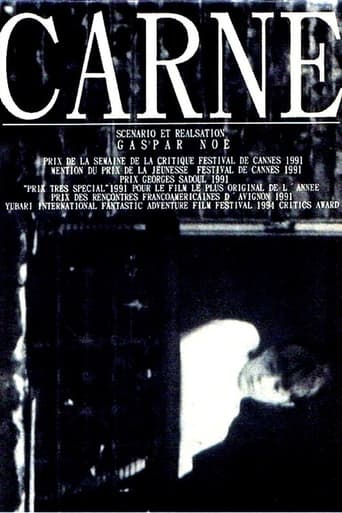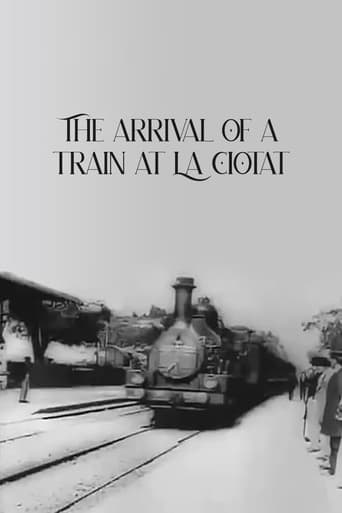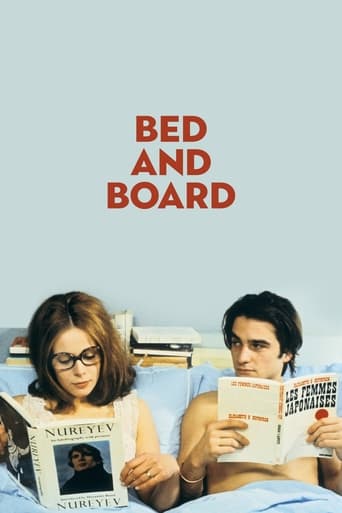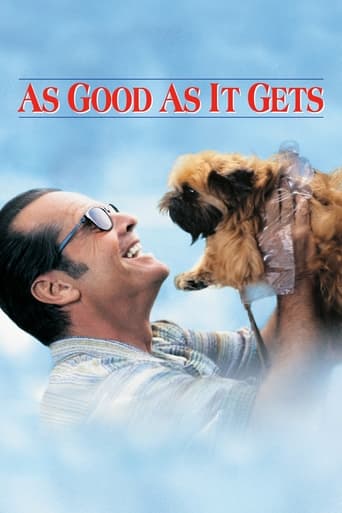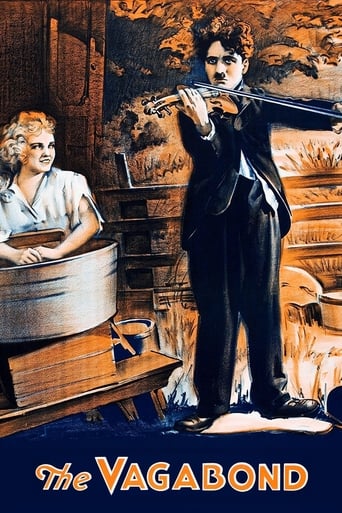
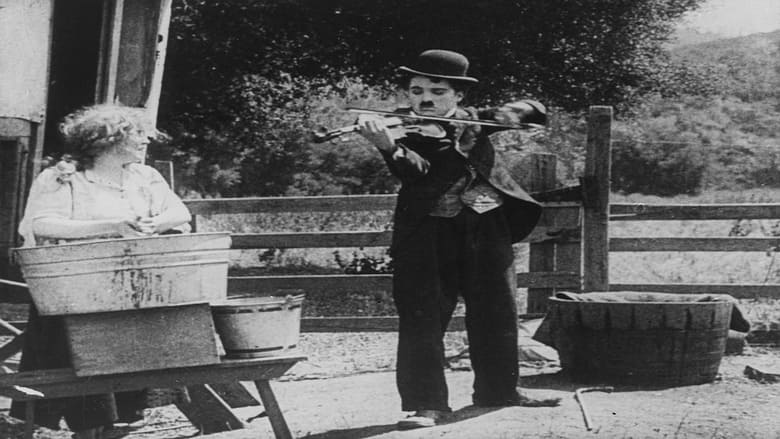
The Vagabond (1916)
A tramp tries to earn money by playing the violin, but he’s soon facing off against the jealous competition.
Watch Trailer
Cast
Similar titles
Reviews
I like the storyline of this show,it attract me so much
Best movie of this year hands down!
This story has more twists and turns than a second-rate soap opera.
The thing I enjoyed most about the film is the fact that it doesn't shy away from being a super-sized-cliche;
THE VAGABOND (Mutual Studios, 1916), directed by Charlie Chaplin, stars the legendary Charlie Chaplin in his third comedy short for the studio. With Chaplin's attempt with improving himself with each passing film, rather than the usual twenty minutes of slapstick and chases, he deftly blends humor and sentiment, a standard that would later become associated by his technique in storytelling. Rather than playing a trouble-making tramp, this time Charlie's a violin playing drifter with more human qualities than before.The story opens in great comedy tradition as Charlie enters a bar to play his violin for the patrons. His music is drowned out by a German street band playing outside. As the band leader enters to collect money, he finds Charlie collecting the money instead. A brawl and chase ensues until the crowd loses themselves in the confusion, giving Charlie a chance to sneak away. Charlie next approaches a gypsy drudge where he plays for a gypsy girl (Edna Purviance) washing clothes. A brief cutaway of the plot shows a society matron (Charlotte Mineau), looking at an old photo of a little girl who, believed by its movie audience to have been abducted by gypsies many years ago. Now a young woman, the girl is shown to be an abused slave to the gypsy leader (Eric Campbell). Witnessing one of her brutal whippings that leaves her senseless, Charlie steps in to rescue her, leading to a wild escape down the road in a gypsy caravan. Resting in a secluded spot on a country road, Charlie, having assisted the gypsy girl with her every needs, finds himself in stiff competition when a struggling artist (Lloyd Bacon) enters the scene, inspired by the girl's beauty and uses her as a subject matter to his latest canvas painting, "The Living Shamrock." THE VAGABOND may not be one of Chaplin's most memorable of his comedy shorts for the Mutual Studios, but it represents him here more as a comic-actor rather than a just a slapstick one. Though scripted by Chaplin himself, the story seems to have some influence to Michael Balfe opera, "The Bohemian Girl," which also involves gypsies. While THE VAGABOND could very well have become a straight dramatic story for the possible choices of a Lillian Gish and Robert Harron under D.W. Griffith's direction, instead, it's Chaplin being both Griffith and Harron, and Purviance being Gish. Because its a two-reel comedy, it leaves very little detail for plot and character development. There are moments found in the film where it looks heavily edited. Usually when comedians do drama, or mix comedy with drama, the attempt fails. Fortunately for Chaplin, his method is believable and acceptable as long as he doesn't stray too far from his usual standard of comedy. Of the Chaplin stock players, including Leo White and Frank J. Coleman, Eric Campbell, later known as "Chaplin's Goliath," stands out as the hefty villainous gypsy with the whip, while the funniest performance comes from a character playing an old white-haired gypsy hag. No screen credit is given for his or her work. If played by an actor in drag, all the funnier. And the young artist, played by Lloyd Bacon, the same Bacon who would become a notable movie director himself.Presented on commercial television in the sixties as part of "Charlie Chaplin Theater," and unseen on public broadcasting television since the 1970s, THE VAGABOND was later resurrected a decade later on cable channels and home video. Though various editions have different underscoring, ranging from orchestration to jazz rhythm and blues, Blackhawk Video's edition consisted of reissue prints presented in theaters of the 1930s with the use of sound effects and instrumental scoring to "The Vagabond Lover" and theme scoring used for the independent feature, VANITY FAIR (Allied Pictures, 1932) starring Myrna Loy. When shown on Turner Classic Movies (TCM premiere: December 6, 1999) as part of its "star of the month" tribute to Charlie Chaplin, THE VAGABOND and other Mutual shorts were broadcast in restored clear visuals, new scoring and in accurate silent film speed extending the standard 22 minute short to 34 minutes. Though that's all well and good, poor scoring most of all takes away the enjoyment of the film, leaving the most preferred viewing from Blackhawk (later Republic) Home Video. Next Chaplin short: ONE A.M. (1916) (***)
A Musician-Tramp (Charlie Chaplin) leaves town following a chase to find himself in a gypsy camp. There he finds a poor abducted girl (Edna Purviance) who he attempts to cheer up with his music. Having witnessed a savage beating of the girl by the gypsy chieftain (Eric Campbell), the Tramp goes about saving the girl and setting her free. While attempting to woo her, a handsome artist chances by and has Edna sit for a portrait. The portrait attracts the attention of Edna's estranged family who attempt to take her away from the Tramp for good.I honestly can't think of a single Chaplin film during which I've laughed so little but on this occasion that is not a negative statement. Here Chaplin provides plenty of his trademark pathos and creates a film which is much more of a romantic drama than romantic comedy or slapstick comedy.The film drives to depths of sadness which I simply wasn't prepared for and around a minute before the end I was starring dumbfounded at the screen. Charlie's attempts to maintain the romance are endearing but you always get the feeling that they are futile. There is a level of romantic lyricism which I haven't found in any Chaplin release prior to this one. For the most part Chaplin foregoes comedy in favour of letting the story unfold and only finds time for the odd knock to the head or spitting of water. To me this film really shows the development of Chaplin from the slapstick comedian of his Keystone and early Essanay days, towards the kind of romantic pathos that he became renowned for by the early 1930s.Another obvious link between his early and latter career are the themes of the film. For me there is a link between this film and 1915s The Tramp and the idea of a beaten and brutalised gypsy girl is explored in even greater detail in 1928s The Circus. Both of those films end with the iconic footage of the Tramp walking away into the distance, happy and content, despite not getting the girl. The ending of The Vagabond seems to be heading down that line but thankfully takes a sharp turn. Given the sadness of the previous five or so minutes I don't think I could have taken any other ending! One interesting point about this film is the Tramp's entrance. The opening shot is of two saloon doors. After a few seconds some feet can be seen approaching the doors from the other side. After just a couple of frames it is obvious that it is the Tramp character from his distinctive walk, shoes and cane. Only those three things are visible until the doors open to reveal the whole man and it shows great confidence in the character's fame. I can think of no other screen character in history that could enter a scene with only their feet showing and the audience would know exactly who they are.Although The Vagabond is certainly not a film I'd recommend to someone unfamiliar with Chaplin's work, for those with an understanding of his history it is a momentous film. Despite very little actual comedy, Chaplin still plays with his audience's emotions and creates a memorable and poignant film that includes two outstanding performances from himself and frequent co-star Edna Purviance.www.attheback.blogspot.com
Chaplin edited, wrote, directed, and produced this film for Mutual in July of 1916 and it stands the test of time, even more so than many of his earlier much funnier films. The reason probably is that the structure of this film, more than any predating it, resembles (however crudely) the basic plot structure of films today. There is a definitive beginning, middle, and end in this film. The film is well edited and written for its time. Chaplin plays a wandering vagabond who tries to make a living playing his violin in public. The film opens in typical Chaplin fashion with misunderstandings and chases punctuated by sight gags and slapstick. There are those viewers who may wander what the tavern scenario has to do with the rest of the film, and the answer is it sets up Chaplin as a resourceful fellow who gets by with his wits and not his fists. Thus when he meets the sad, browbeaten Edna Purviance, it's clear what Chaplin must do to extricate her from a band of cruel gypsies; he must use some good old-fashioned ingenuity. After rescuing her from the likes of the crude, whip-wielding Eric Campbell in comic fashion, the story settles into its melodramatic mode. The film successfully combines bits of comedy, plot, and pathos-inducing drama in a way that previous Chaplin films had not. The result is a rough draft of the Chaplin formula, which he would later reuse to greater effect and success in his longer features. *** of 4 stars.
In 1914 and early 1915, Chaplin did his first comedy shorts. In general, they were pretty awful--with almost no plot and consisting of him mugging it up on camera and hitting people. However, in 1915 he left Keystone Studio and began making better films with Essenay (though there are some exceptions) and finally, in 1916, to Mutual where he made his best comedy shorts. These newer films had more plot and laughs and usually didn't relay on punching or kicking when they ran out of story ideas.This film tells a complete story--more so than almost any other Chaplin short. In fact, in many ways it is reminiscent of some of his later full-length films--in particular, THE CIRCUS. There were two problems with the film, though. One is a pretty lousy plot device on which the whole film relies. A woman was apparently stolen by gypsies as a little girl and later, as an adult, her portrait is painted and the girl's biological mother recognizes this 20-something year-old as her long-lost daughter!!! Talk about unbelievable! The other problem is that in the version I saw from THE ESSENTIAL CHAPLIN COLLECTION, there were no title cards to explain the action. I had to read the box to get an idea of what was occurring! It's a shame, as without these two problems, it would have been among Chaplin's best shorts.

